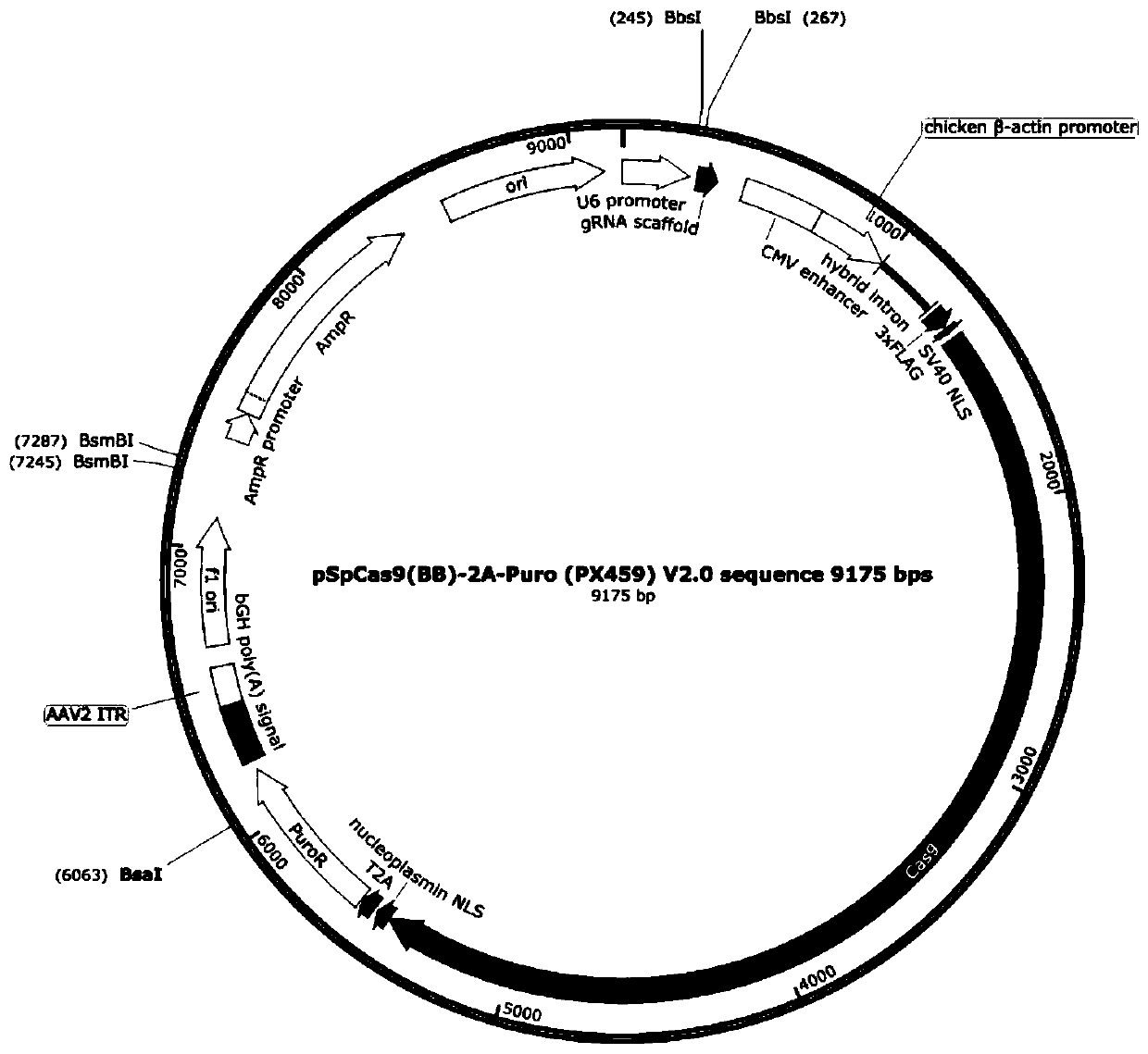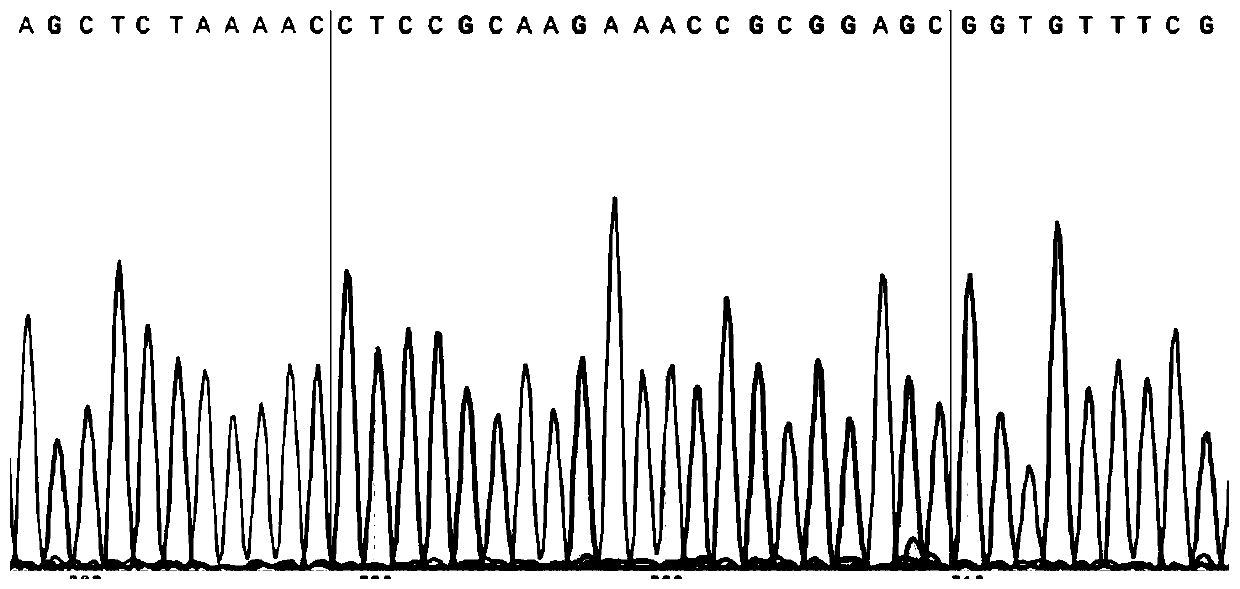Construction method of SIRT1 gene knockout IPEC-J2 cell line
A technology of IPEC-J2 and construction method, applied in the field of gene knockout, can solve the problems such as unclear integrity of intestinal epithelium
- Summary
- Abstract
- Description
- Claims
- Application Information
AI Technical Summary
Problems solved by technology
Method used
Image
Examples
Embodiment 1
[0041] A kind of embodiment of the construction method of the IPEC-J2 cell line of SIRT1 gene knockout of the present invention, comprises the steps:
[0042] 1. SIRT1 target site design and sgRNA sequence synthesis
[0043] According to the NCBI database, the ORF sequences of all transcripts of the porcine SIRT1 gene (Gene ID: NM_001145750.2) were obtained, and the first exon of the ORF region was located for target site design.
[0044] Use the online tool (http: / / tools.genome engineering.org) to design and screen the sgRNA guide sequence: 5'-CTCCGCGGTTTCTTGCGGAG-3', where the sgRNA action site is located in the first exon of the pig SIRT1 gene, at its 5' end Add CACCG to form positive oligo DNA.
[0045] Simultaneously synthesize the reverse complement of the sgRNA sequence:
[0046] 5'-CTCCGCAAGAAACCGCGGAG-3', and add AAAC at the 5' end and C at the 3' end to form a reverse OligoDNA. The base sequence of SIRT1-sgRNA is as follows:
[0047] 5'-CACCG CTCCGCGGTTTCTTGCGG...
PUM
 Login to View More
Login to View More Abstract
Description
Claims
Application Information
 Login to View More
Login to View More - R&D
- Intellectual Property
- Life Sciences
- Materials
- Tech Scout
- Unparalleled Data Quality
- Higher Quality Content
- 60% Fewer Hallucinations
Browse by: Latest US Patents, China's latest patents, Technical Efficacy Thesaurus, Application Domain, Technology Topic, Popular Technical Reports.
© 2025 PatSnap. All rights reserved.Legal|Privacy policy|Modern Slavery Act Transparency Statement|Sitemap|About US| Contact US: help@patsnap.com



